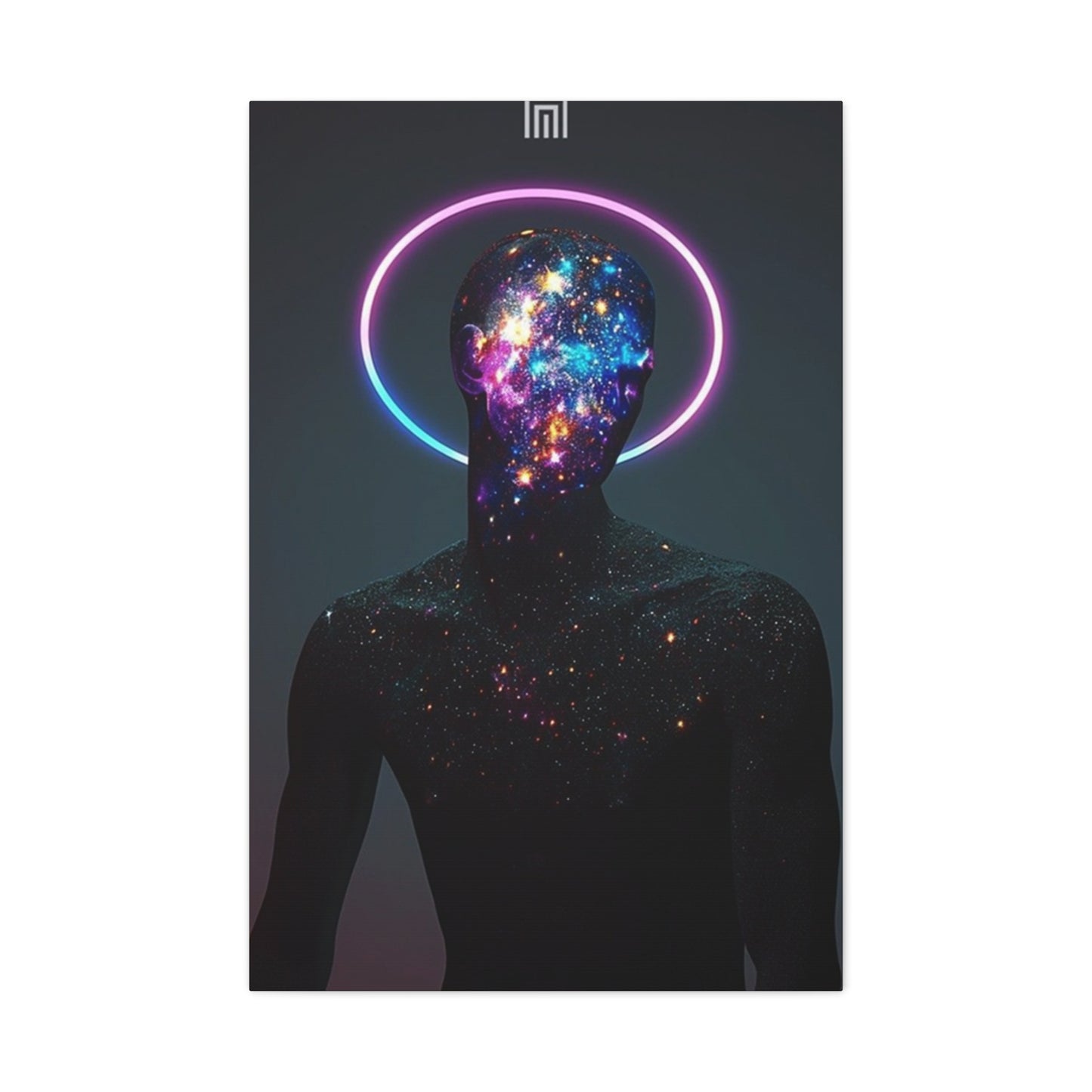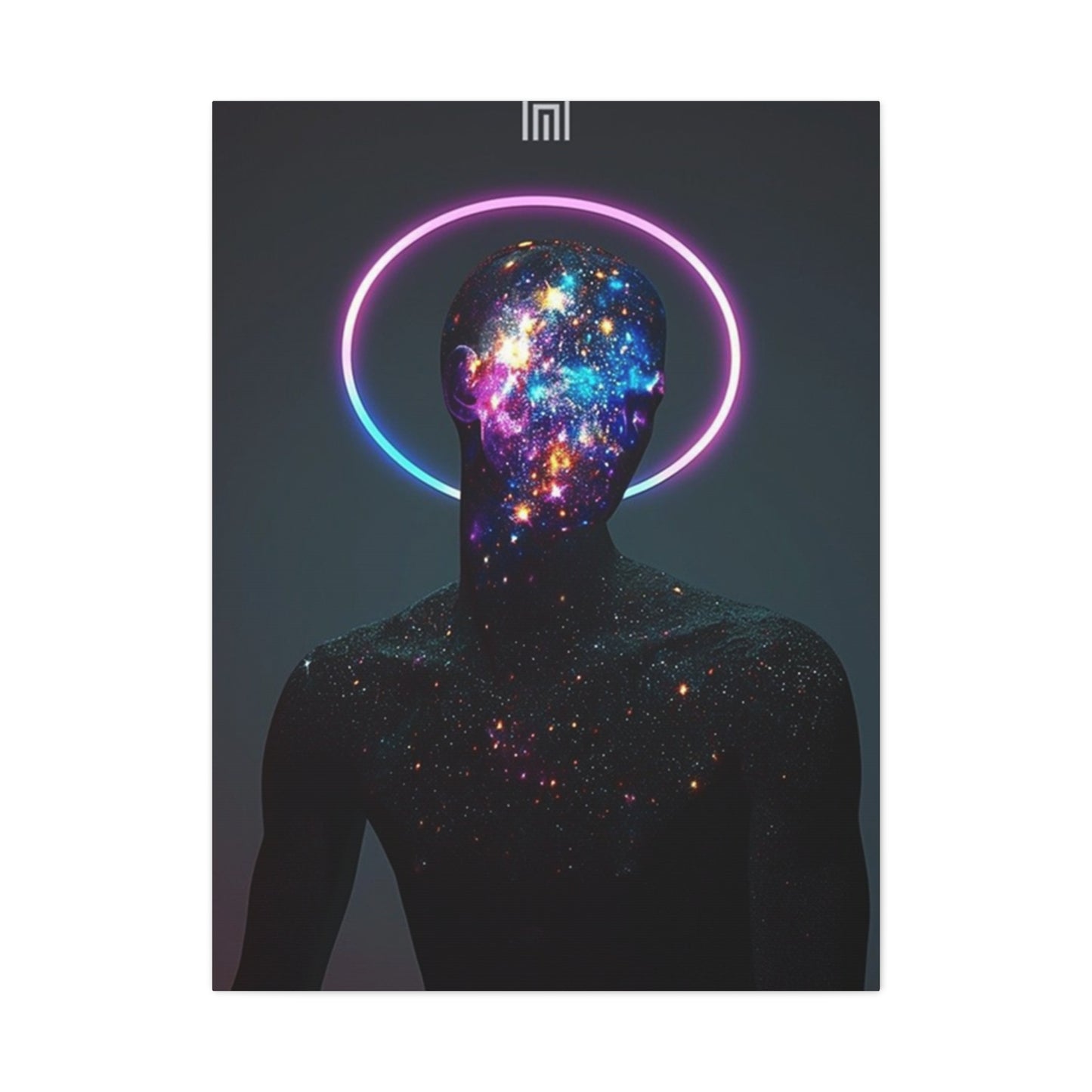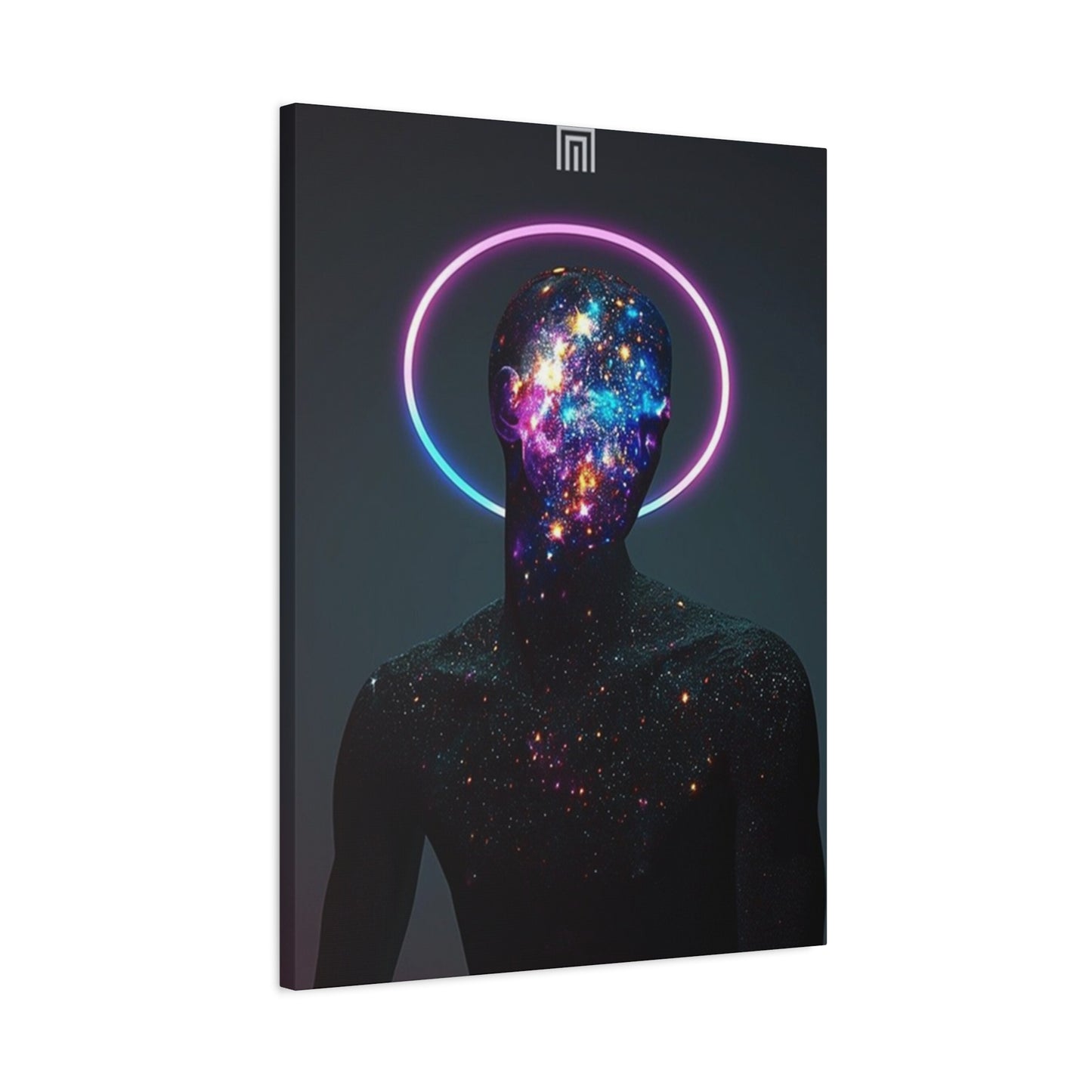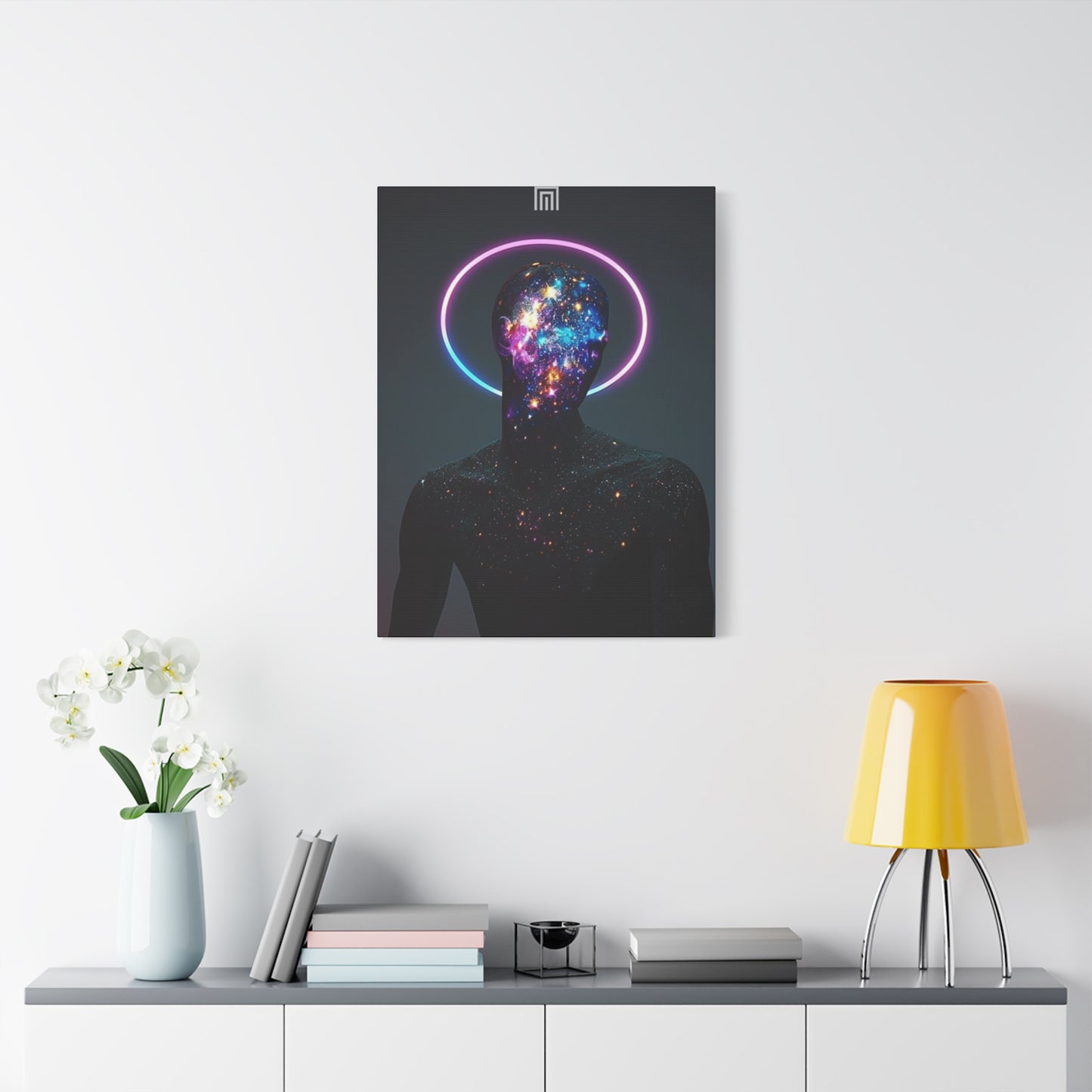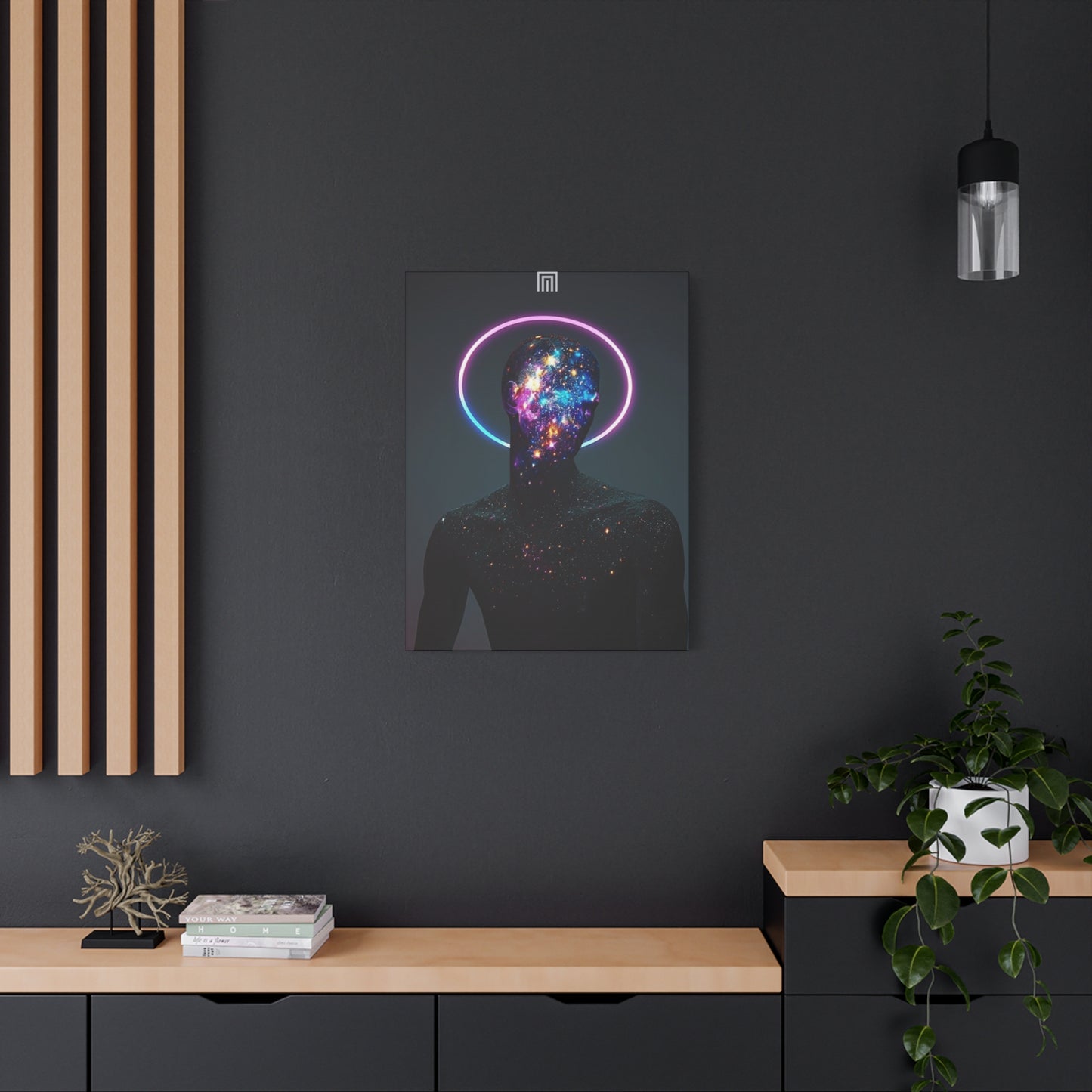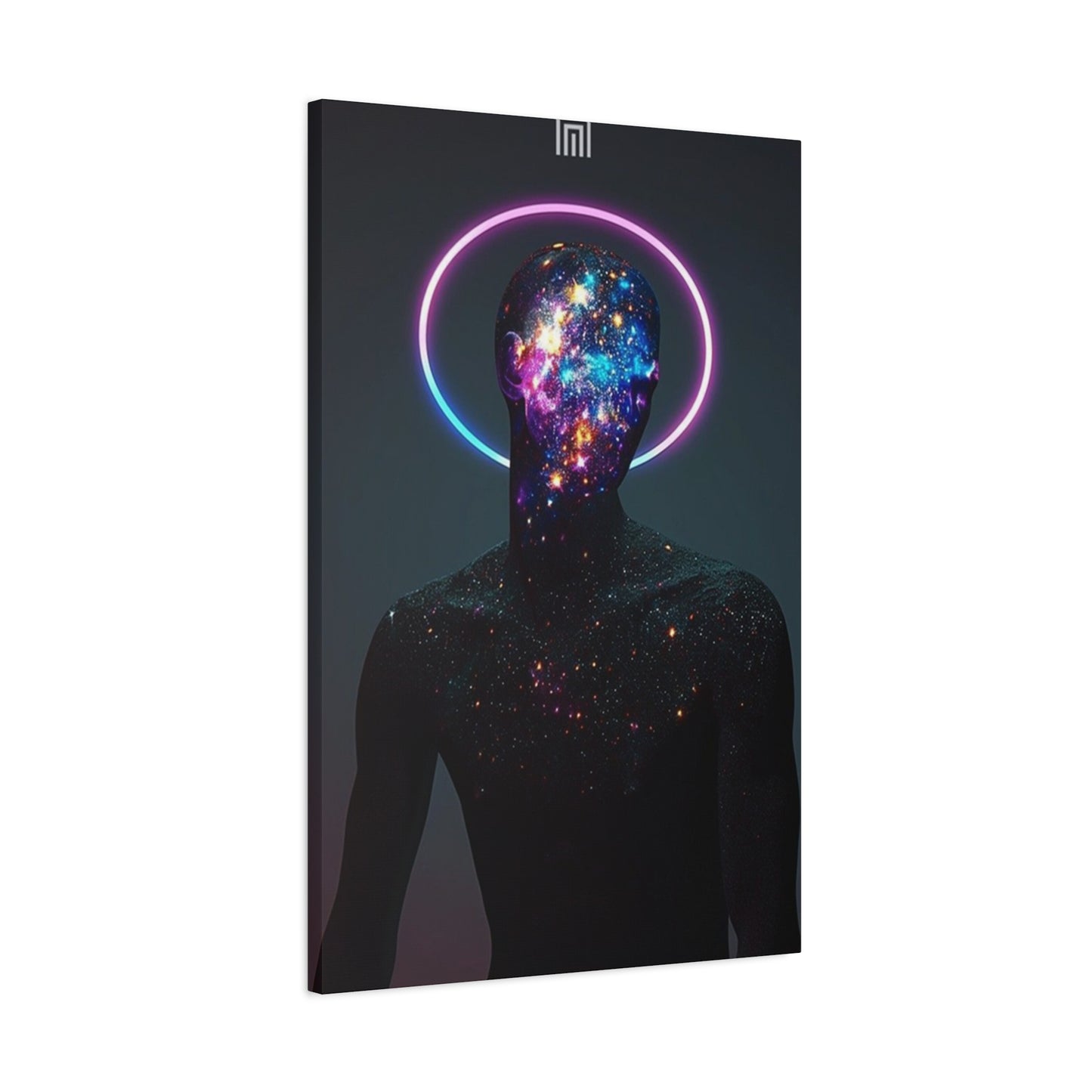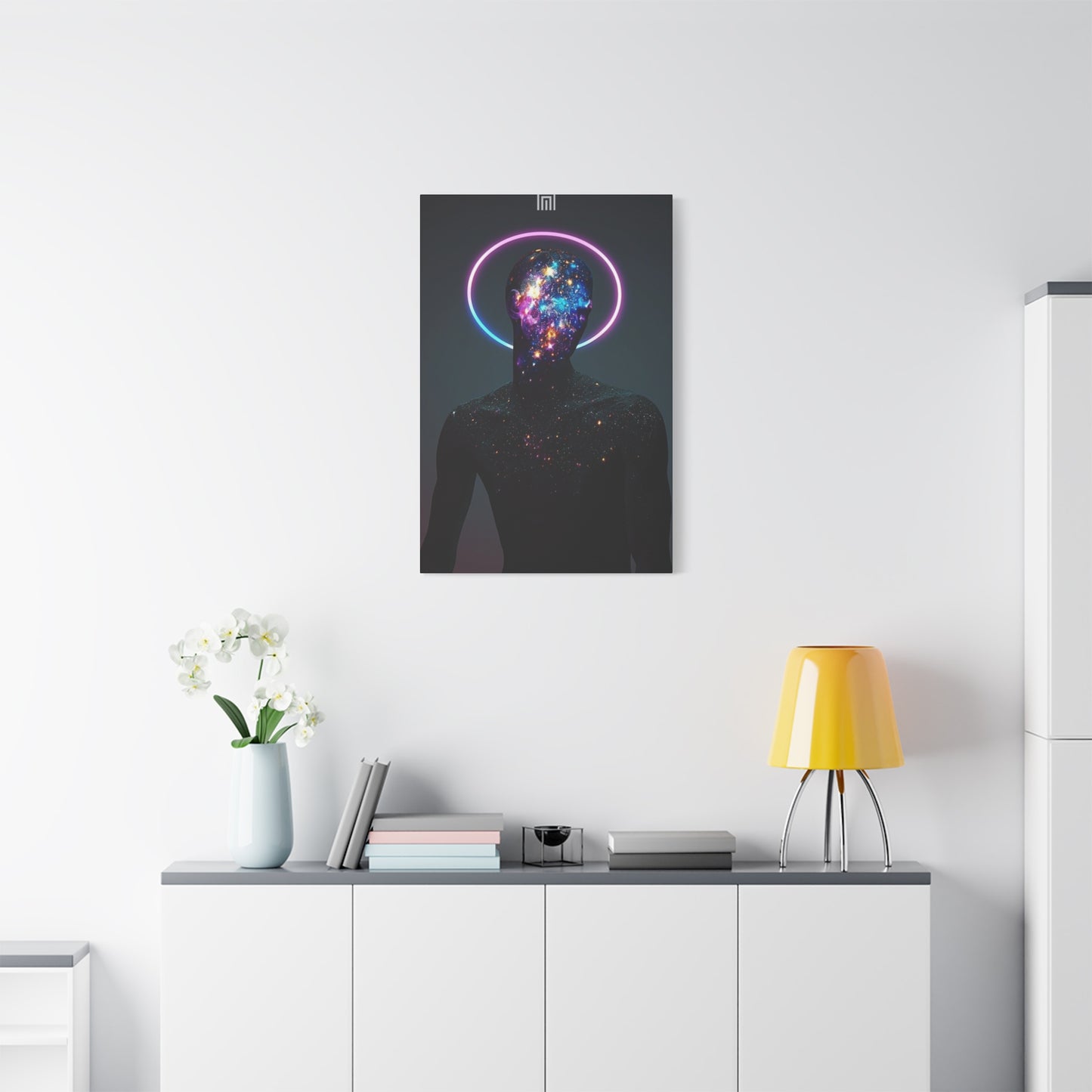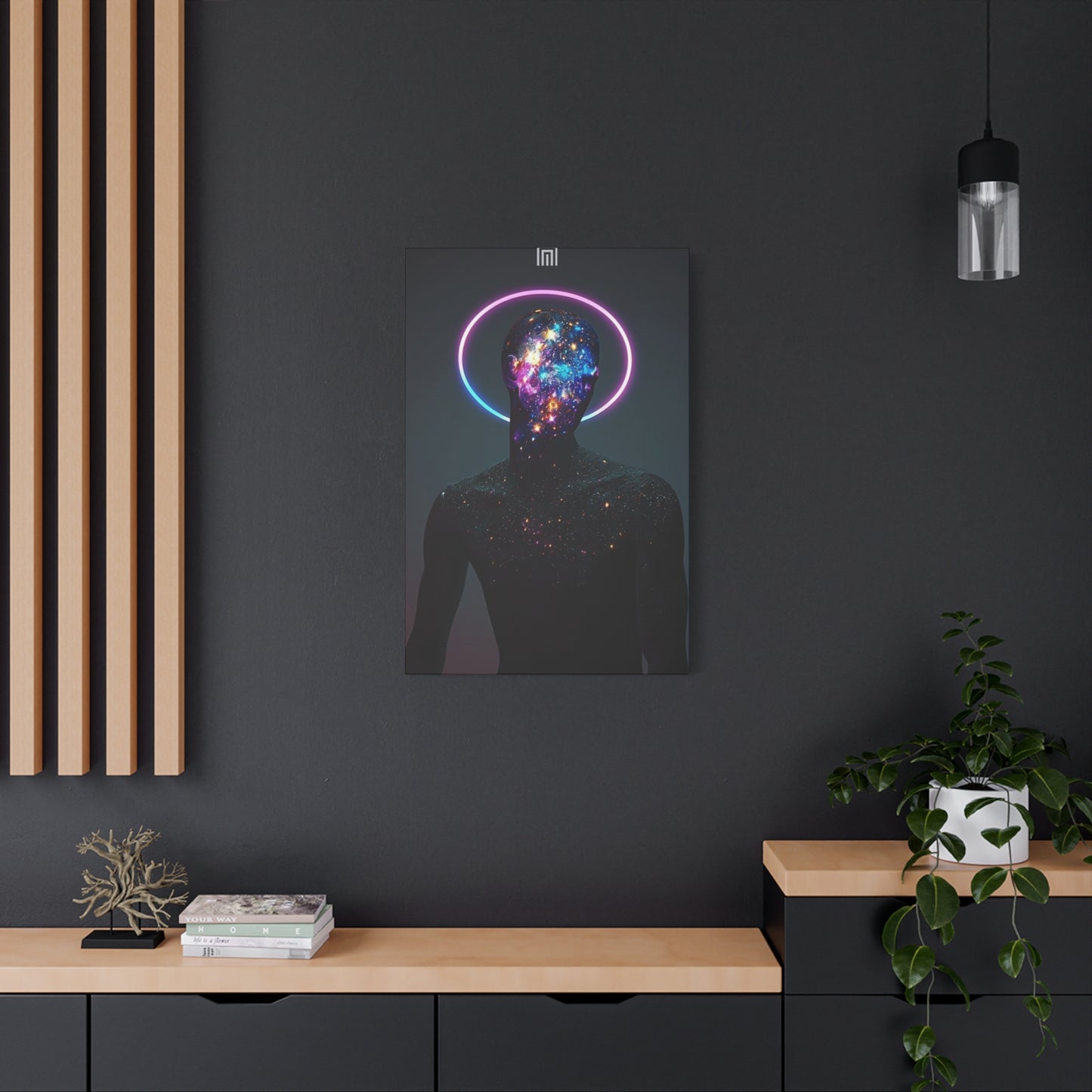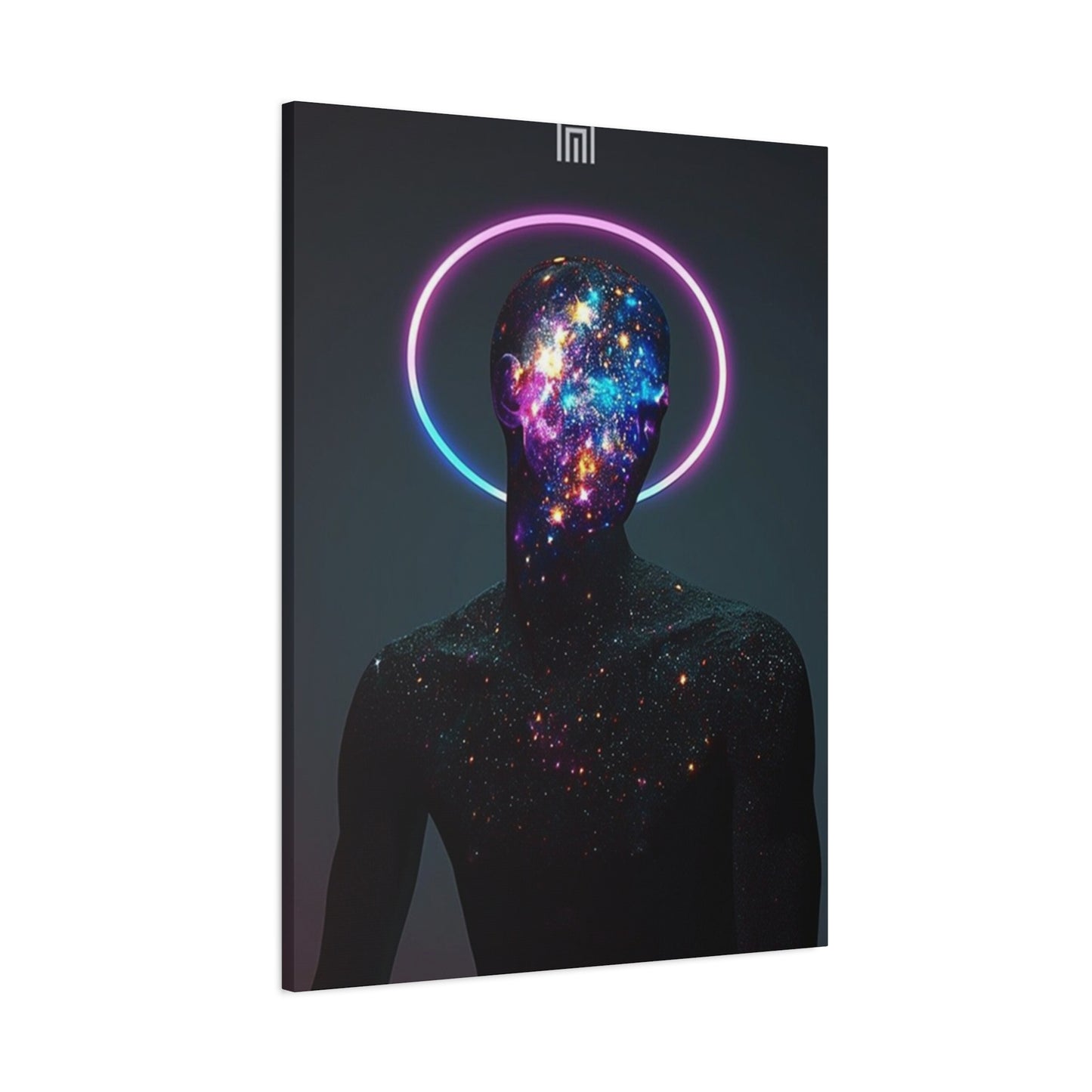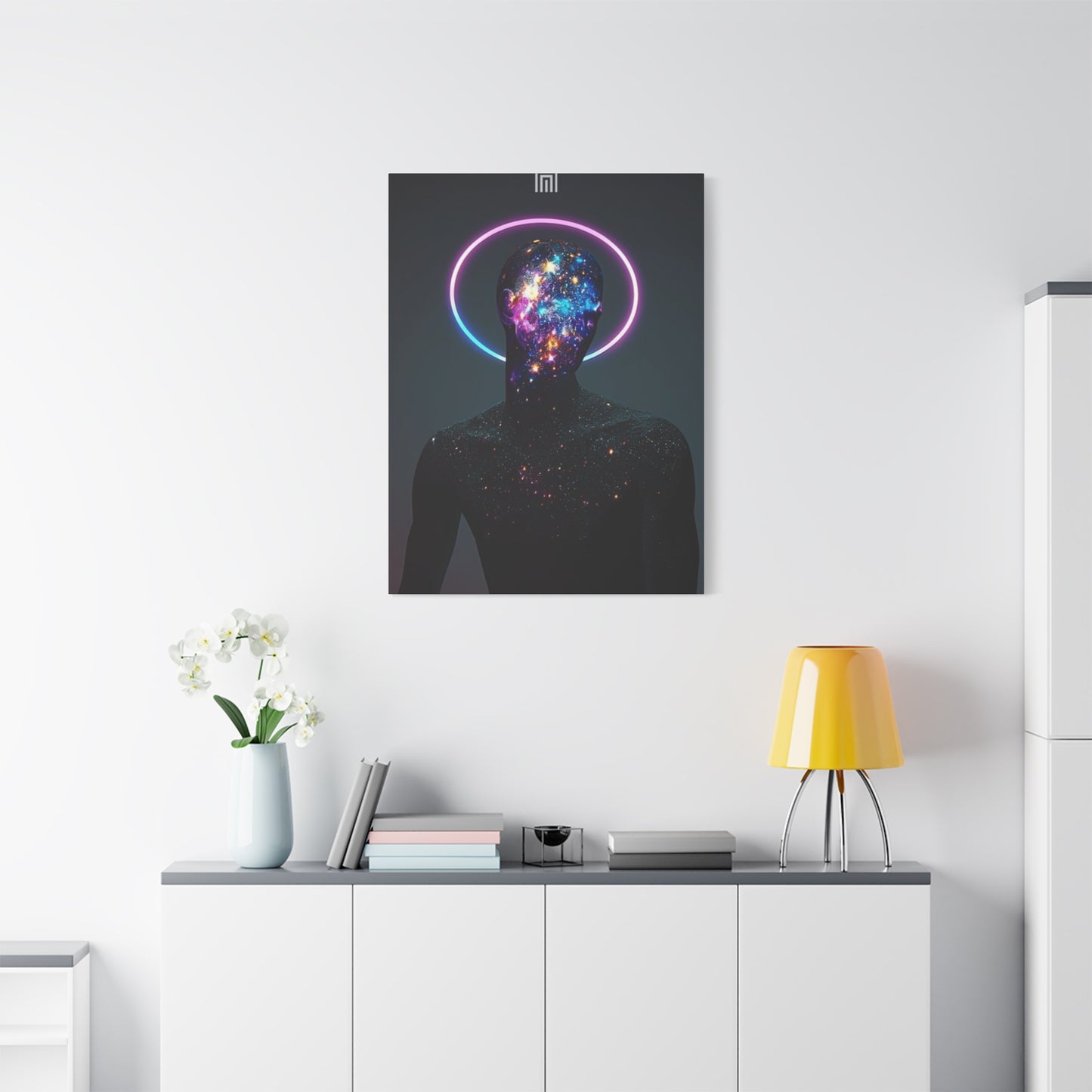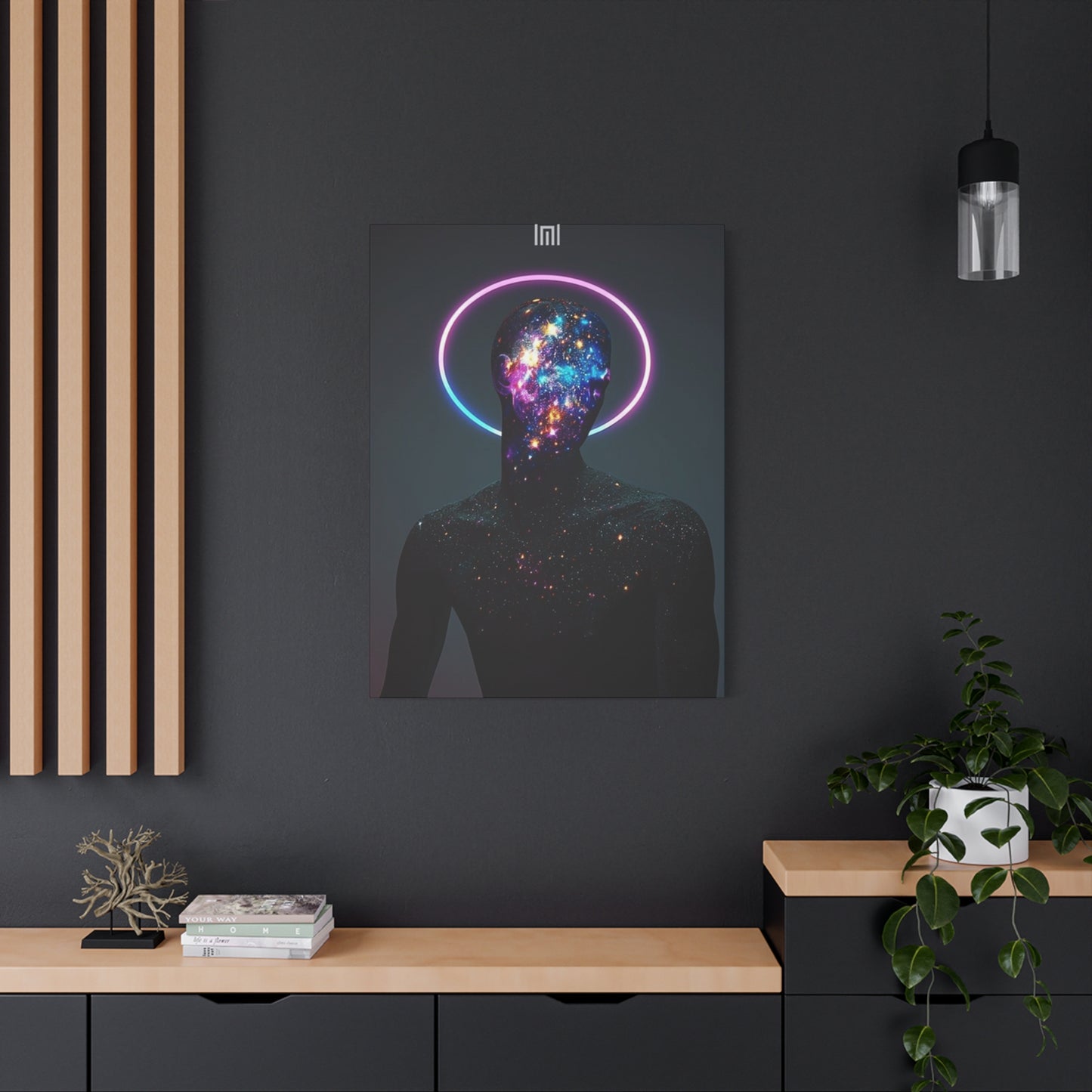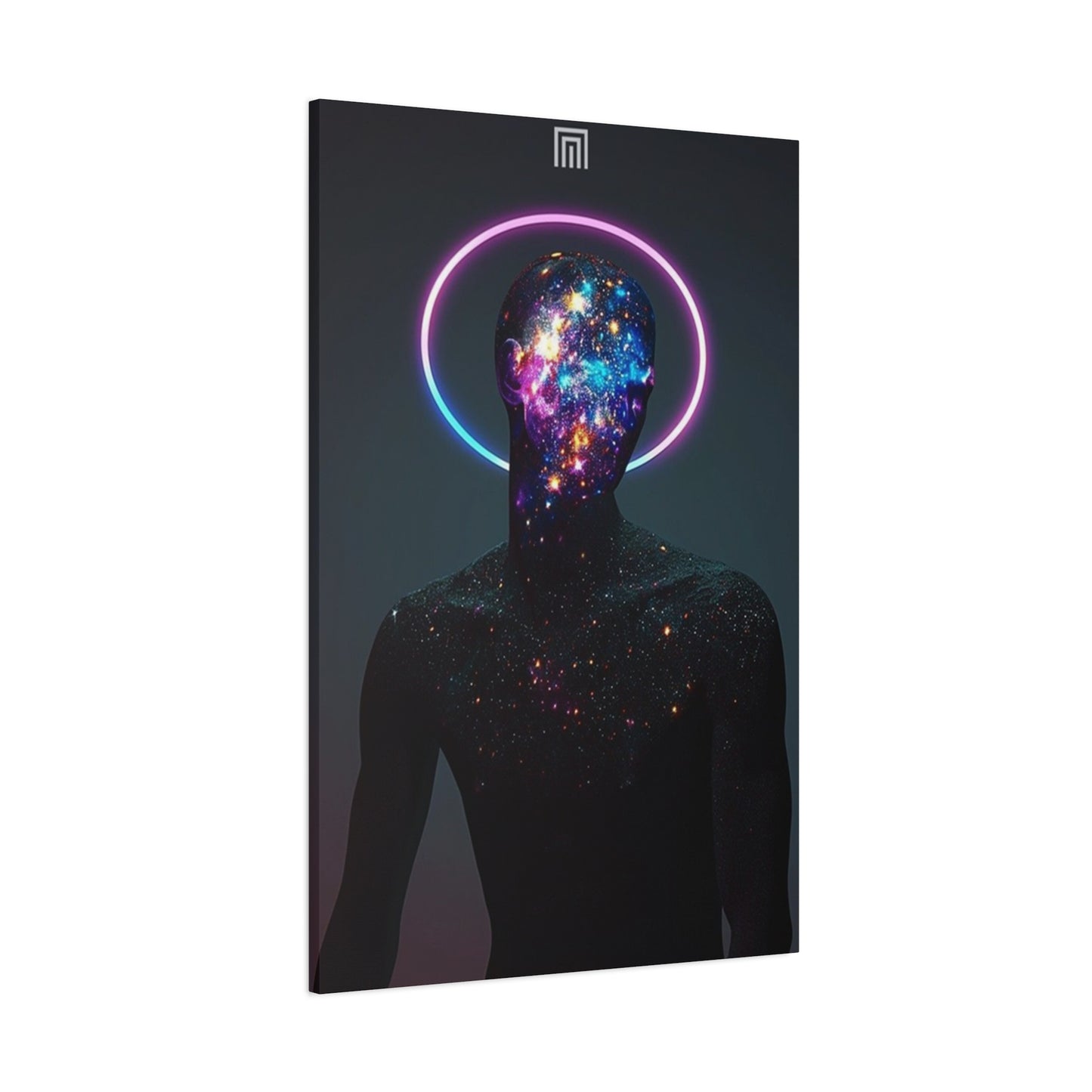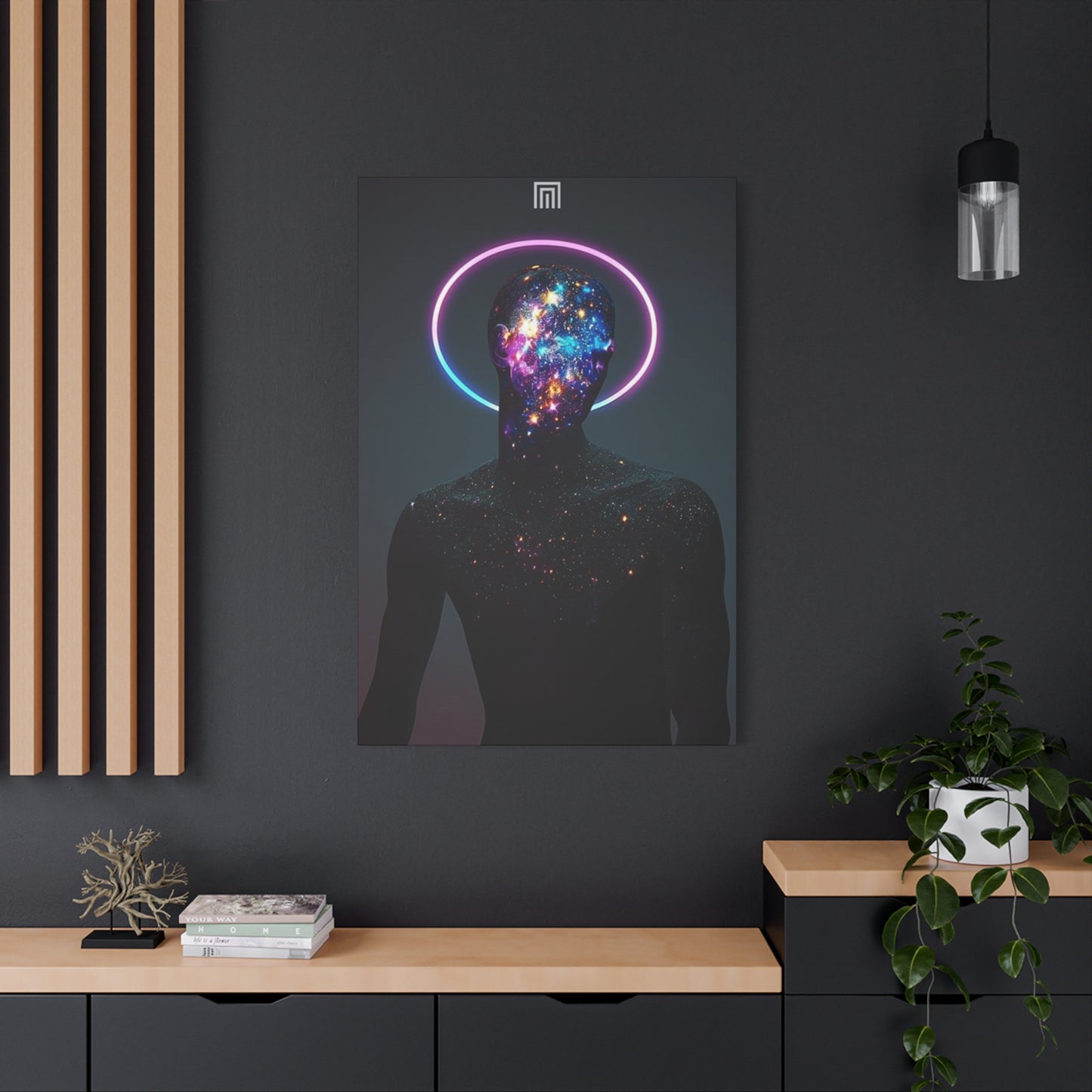Symbols of Serenity: The Hidden Meanings Behind Popular Spiritual Wall Art Designs
The journey toward inner peace and spiritual awakening often begins within the walls of our own homes. Spiritual wall art canvas prints have emerged as powerful tools for creating sanctuaries that nurture the soul and elevate consciousness. These carefully crafted pieces serve as visual reminders of our connection to something greater than ourselves, whether that connection is to divine energy, universal wisdom, or the depths of our own inner being.
In today's fast-paced world, where distractions bombard us from every direction, the need for sacred spaces has never been more critical. Canvas prints featuring spiritual themes offer an accessible and aesthetically pleasing way to infuse your living environment with meaningful energy. Unlike temporary decorations or fleeting trends, these artistic expressions carry weight and intention, transforming ordinary rooms into extraordinary spaces for meditation, reflection, and personal growth.
The beauty of spiritual wall art canvas prints lies in their versatility and profound impact on our daily lives. Whether you are drawn to Buddhist mandalas, Hindu deities, Christian iconography, Islamic calligraphy, or nature-based spirituality, there exists a vast universe of artistic expressions waiting to resonate with your unique spiritual path. These prints do more than simply decorate blank walls; they serve as focal points for meditation, conversation starters about deeper truths, and constant reminders of the values and beliefs that guide your life journey.
The Ancient Origins of Sacred Visual Expression
Throughout human history, civilizations have recognized the power of visual representations to convey spiritual truths and facilitate connection with the divine. From the cave paintings of Lascaux to the intricate mandalas of Tibetan Buddhism, from the soaring frescoes of Renaissance cathedrals to the precise geometric patterns of Islamic art, humanity has consistently turned to visual expression as a means of exploring and communicating spiritual concepts.
Ancient Egyptians adorned temple walls with hieroglyphic narratives depicting their pantheon of gods and the journey of the soul through the afterlife. These were not merely decorative elements but served as sacred texts, teaching tools, and portals to higher consciousness. The intricate detail and symbolic richness of Egyptian spiritual art demonstrates how visual elements can encode complex philosophical and theological concepts in ways that transcend the limitations of written language.
In the East, Buddhist art evolved over millennia to capture the essence of enlightenment and the path toward liberation from suffering. The serene countenance of Buddha statues and paintings communicates peace and equanimity, while thangka paintings serve as meditation aids, guiding practitioners through complex visualizations essential to tantric practice. These traditional forms now find new life in contemporary canvas prints, making ancient wisdom accessible to modern seekers.
Hindu traditions have produced an extraordinarily rich visual vocabulary for expressing spiritual concepts through depictions of deities, each representing different aspects of the divine and different paths toward union with the ultimate reality. The vibrant colors, multiple arms, and symbolic objects associated with figures like Shiva, Vishnu, Lakshmi, and Ganesha encode profound teachings about the nature of existence and the human capacity for transcendence. When reproduced as canvas prints, these images bring the energy of centuries-old devotional practices into contemporary homes.
Varieties of Spiritual Themes in Canvas Art
The diversity of spiritual wall art canvas prints available today reflects humanity's many paths toward the sacred. Buddhist-themed prints often feature the historical Buddha in various mudras or hand positions, each conveying different aspects of enlightenment. The meditation mudra, with hands folded in the lap, promotes inner stillness, while the earth-touching mudra, with the right hand reaching toward the ground, reminds us to remain grounded even as we pursue transcendence. Bodhisattvas like Avalokiteshvara and Tara, representing compassion and swift action respectively, offer inspiration for developing these qualities in our own lives.
Mandala designs represent perhaps the most universally recognized spiritual art form, transcending specific religious traditions to speak to the human need for wholeness and integration. These circular compositions, radiating from a central point, mirror the structure of the cosmos from galaxies to atoms, reminding us of our place in the grand order of things. Tibetan sand mandalas, traditionally created over days or weeks then destroyed to illustrate impermanence, are now preserved in photographic canvas prints that allow meditation on both their intricate beauty and the philosophical teachings they embody.
Hindu spiritual art brings extraordinary color and vitality to canvas prints, with depictions of Ganesha, the elephant-headed remover of obstacles, being particularly popular for home altars and meditation spaces. His presence at the beginning of any spiritual undertaking promises divine assistance and the clearing of impediments from one's path. Lakshmi, the goddess of abundance and prosperity, appears seated on a lotus with gold coins flowing from her hands, making her image popular for those working with prosperity consciousness and gratitude practices. Shiva in his Nataraja form, dancing the cosmic dance of creation and destruction within a ring of fire, captures the dynamic nature of existence and the transformative power of spiritual practice.
Christian spiritual art available in canvas print format ranges from traditional iconography to contemporary abstract expressions of faith. Reproductions of classical paintings depicting scenes from the life of Christ, the Virgin Mary, or the saints connect modern believers to centuries of devotional tradition. More abstract representations featuring crosses, doves, or rays of divine light appeal to those seeking spiritual reminders without literal figurative imagery. Scripture verses rendered in beautiful typography, often combined with nature photography, create canvas prints that double as daily affirmations and artistic focal points.
Islamic spiritual art, bound by aniconism that prohibits representations of the divine or prophets, has developed perhaps the most sophisticated abstract spiritual aesthetic. Arabic calligraphy transforms sacred verses from the Quran into visual poetry, where the meaning of the words is inseparable from their visual beauty. Geometric patterns derived from mathematical principles reflect the order and perfection of divine creation, with infinite variations on themes of unity and multiplicity. These prints bring a sense of contemplative sophistication to modern interiors while maintaining deep spiritual significance.
Chakra Systems and Energy-Based Artwork
The concept of chakras, or energy centers within the subtle body, has moved from esoteric knowledge to mainstream awareness, influencing the creation and selection of spiritual wall art canvas prints. Each of the seven primary chakras corresponds to specific colors, elements, and aspects of human experience, making chakra-themed artwork particularly powerful for those working consciously with their energy systems.
Root chakra artwork typically features deep reds and earth tones, often incorporating imagery of mountains, trees, or the earth element itself. These prints support grounding practices and help individuals who feel scattered or uncentered reconnect with their physical existence and basic survival instincts. Placing root chakra canvas art in entryways or lower areas of living spaces reinforces feelings of safety and stability, essential foundations for all higher spiritual work.
Sacral chakra prints embrace vibrant oranges and flowing water imagery, celebrating creativity, sensuality, and emotional fluidity. These pieces work particularly well in creative studios or bedrooms, spaces where we connect with pleasure, passion, and the generative forces of life. The sacral chakra governs our ability to form healthy relationships and experience joy, making artwork that activates this energy center valuable for those healing from emotional wounds or seeking to enhance their creative expression.
Solar plexus chakra artwork radiates with yellows and golds, often featuring sun imagery, fire elements, or symbols of personal power like lions or warriors. These prints energize spaces dedicated to work or personal development, supporting confidence, willpower, and the courage to pursue one's authentic path. For individuals struggling with low self-esteem or boundary issues, solar plexus canvas art serves as a constant reminder of their inherent power and right to take up space in the world.
Heart chakra prints in greens and pinks feature imagery of lotus flowers, roses, doves, or the sacred heart symbol found in various traditions. These pieces facilitate the crucial work of opening to love, both self-love and love for others, while maintaining healthy emotional boundaries. Placing heart chakra artwork in living rooms, gathering spaces, or therapy rooms creates atmospheres conducive to authentic connection, forgiveness, and compassionate communication.
Throat chakra artwork in shades of blue often incorporates symbols of truth-telling, communication, and creative expression like birds, musical instruments, or mantras. These prints support those finding their voice, whether through artistic pursuits, public speaking, or simply learning to express needs and boundaries clearly. The throat chakra serves as the bridge between heart and mind, emotion and thought, making artwork that activates this center valuable for those seeking to align their words with their deepest truths.
Sacred Geometry in Modern Canvas Prints
Sacred geometry represents one of the most intellectually satisfying and visually stunning categories of spiritual wall art canvas prints. These designs are based on mathematical principles found throughout nature and the cosmos, from the spiral of seashells following the Fibonacci sequence to the hexagonal structure of honeycombs. By surrounding ourselves with these patterns, we align our living spaces with the fundamental organizing principles of the universe itself.
The Flower of Life, perhaps the most recognized sacred geometry symbol, consists of multiple evenly-spaced, overlapping circles forming a flower-like pattern. This deceptively simple design contains the building blocks of all other geometric forms and has been found in ancient temples and manuscripts across cultures and continents. Canvas prints featuring the Flower of Life serve as meditation focal points and are believed to emanate harmonizing frequencies that affect the energy of entire spaces. Many people report feeling more centered and balanced in rooms adorned with this ancient symbol.
Metatron's Cube, derived from the Flower of Life, contains all five Platonic solids, the fundamental three-dimensional shapes from which all matter is constructed. Named after the archangel Metatron, who oversees the flow of energy throughout creation, this complex geometric figure represents the divine blueprint underlying physical reality. Canvas prints of Metatron's Cube appeal to those interested in the intersection of spirituality and science, offering visual proof of the ordered, mathematical nature of creation while maintaining profound mystical significance.
The Sri Yantra, central to Hindu and Buddhist tantric traditions, consists of nine interlocking triangles radiating from a central point, surrounded by lotus petals and a protective square. This intricate mandala represents the cosmic union of masculine and feminine energies and serves as a powerful tool for concentration during meditation. The precise geometric relationships within the Sri Yantra are said to generate specific vibrational frequencies that awaken higher consciousness. Canvas prints of this yantra turn any wall into a portal for spiritual practice.
The Fibonacci spiral appears throughout nature in nautilus shells, galaxy arms, hurricanes, and even the proportions of the human body. This logarithmic spiral, where each segment relates to the next by the golden ratio, represents growth and evolution following divine proportion. Canvas prints featuring Fibonacci spirals connect us to the natural processes of development and transformation, reminding us that our spiritual growth follows inherent patterns aligned with universal laws. These prints work particularly well in spaces dedicated to personal development and healing.
Platonic solids, the five regular polyhedra representing the elements of fire, earth, air, water, and ether, appear in canvas prints both individually and in combination. The tetrahedron's sharp angles and stable base make it ideal for representations of fire and willpower. The cube, with its perfect stability, represents earth and grounding. The octahedron mirrors itself, representing air and balance. The icosahedron, with its twenty triangular faces, represents water and flow. The dodecahedron, most complex of the five, represents ether or spirit, the element that transcends and contains all others. Collections of Platonic solid prints create comprehensive elemental balance in living spaces.
Meditation Spaces Enhanced by Canvas Art
Creating dedicated meditation spaces has become increasingly popular as people recognize the value of having a physical location associated specifically with spiritual practice. Spiritual wall art canvas prints play a crucial role in transforming ordinary rooms or corners into sanctuaries that support regular meditation practice. The key is selecting artwork that aligns with your specific meditation style and intentions while avoiding overstimulation that might distract from inner focus.
For mindfulness meditation practitioners, who focus on present-moment awareness without specific visualization, simple, calming canvas prints work best. Images of single flowers, peaceful Buddha faces, or abstract designs in soothing colors provide gentle focal points without demanding active mental engagement. The goal is artwork that settles the mind rather than stimulates it, creating an environment where thoughts naturally slow and awareness becomes more spacious. Muted earth tones and minimalist compositions support the quality of bare attention that mindfulness practice cultivates.
Transcendental meditation and mantra-based practices benefit from canvas prints featuring sacred sounds and syllables. The Om symbol, Sanskrit seed syllables called bija mantras, or beautiful calligraphy of mantras like "Om Mani Padme Hum" provide visual anchors that complement auditory repetition. Some practitioners find that gazing at written mantras before closing their eyes for meditation helps deepen their practice, as the visual memory of the sacred sounds merges with their repetition, creating multisensory spiritual experiences.
Visualization meditation, where practitioners construct detailed mental images of deities, enlightened beings, or sacred landscapes, draws particular power from canvas prints depicting these subjects. Thangka-style paintings of Tibetan Buddhist deities, for example, contain precise details about proportions, colors, and symbolic objects that practitioners internalize through study and contemplation. Having these images prominently displayed in meditation spaces provides reference points for visualization practice and allows practitioners to absorb details subconsciously, enriching their meditation experiences even without active study.
Chakra meditation practices benefit from canvas prints showing the entire chakra system or individual chakra symbols. Some meditators prefer to change artwork regularly, rotating through different chakra prints as they focus on different energy centers during various phases of their practice. Others prefer comprehensive chakra charts that allow them to visualize energy moving through all centers during each session. Prints incorporating both the subtle body map and the physical body outline help practitioners new to energy work understand the relationship between chakras and physical anatomy.
Feng Shui Principles for Spiritual Art Placement
The ancient Chinese practice of feng shui offers sophisticated principles for positioning spiritual wall art canvas prints to maximize their beneficial effects while maintaining harmonious energy flow throughout living spaces. While Western decorating focuses primarily on aesthetics, feng shui considers how artwork affects the movement of chi, or life force energy, through rooms and how placement relative to compass directions influences specific life areas.
The commanding position, a fundamental feng shui principle, suggests placing the most important canvas prints where they can be seen from the entrance to a room but are not directly in line with the door. This position allows artwork to command attention and influence the room's energy without blocking the flow of chi as it enters. For meditation rooms, placing your primary spiritual canvas print in the commanding position ensures it serves as the focal point without creating energy stagnation that occurs when important features sit directly opposite doorways.
The bagua map divides spaces into nine sections corresponding to different life areas: wealth and abundance, fame and reputation, love and relationships, family and new beginnings, health, children and creativity, knowledge and spirituality, career and life path, and helpful people and travel. By overlaying this map on your home or individual rooms, you can strategically place spiritual canvas prints to enhance specific life areas. For example, a Lakshmi print in the wealth corner supports abundance consciousness, while a Quan Yin print in the relationship corner invites compassionate energy into partnerships.
Elemental balance plays a crucial role in feng shui, with each compass direction and life area associated with specific elements: wood, fire, earth, metal, and water. Spiritual canvas prints should either match or support the element of their placement area. Southern walls, governed by fire, benefit from red-toned prints or imagery of spiritual illumination. Northern walls, governed by water, harmonize with blue or black canvas prints featuring flowing water or ocean deities. Eastern walls, governed by wood, pair well with green prints or nature-based spiritual imagery. Western walls, governed by metal, work well with white, silver, or gold-toned spiritual art. Considering these elemental relationships creates spaces where artwork enhances rather than conflicts with natural energy patterns.
Yin and yang balance, the interplay of passive and active forces, influences how spiritual canvas prints affect room energy. Meditation spaces generally benefit from more yin qualities like softness, curves, and cool colors, supporting the inward, receptive nature of contemplative practice. Yang elements like bright colors, sharp angles, and dynamic imagery work better in spaces dedicated to active spiritual practices like chanting, movement meditation, or energy work. Balancing yin and yang prevents spaces from becoming either too passive and stagnant or too active and overstimulating.
Creating Personal Altars with Canvas Art
Personal altars serve as physical focal points for spiritual practice, intention-setting, and connection with the sacred. Spiritual wall art canvas prints often form the backdrop or central element of home altars, providing visual focus and establishing the energetic tone for the sacred space. Creating an altar that truly serves your spiritual needs requires thoughtfulness about both the canvas art selected and how it relates to other altar elements.
Altar placement traditionally follows either religious guidelines or intuitive spiritual principles. Many traditions suggest placing altars facing east, the direction of sunrise and new beginnings, or north, the direction of spiritual wisdom in many systems. However, practical considerations like wall space, natural light, and privacy often take precedence. The most important factor is that your altar occupies a location where you will actually use it regularly, even if that means adapting traditional placement guidelines to modern living situations. A canvas print above or behind your altar should be positioned at or slightly above eye level when you are seated in your primary altar practice position.
Thematic coherence between canvas prints and altar objects creates powerful energetic fields. If your canvas art features a specific deity or spiritual teacher, altar offerings might include objects, colors, or symbols associated with that figure. A Ganesha canvas print, for example, pairs well with orange or red altar cloths, small elephant figurines, and offerings of sweets or flowers. This coherence doesn't require rigid adherence to tradition but rather thoughtful correlation between visual and physical elements that reinforces your spiritual intentions.
Seasonal altar changes keep spiritual practice fresh and aligned with natural cycles. Some practitioners rotate canvas prints to reflect seasonal energies: verdant goddess images for spring, solar deity prints for summer, harvest abundance art for autumn, and introspective or void-focused prints for winter. This rotation prevents altar spaces from becoming stale or ignored while connecting personal practice to the larger rhythms of nature and celestial movements. Digital printing's affordability makes maintaining a collection of seasonal canvas prints accessible to most spiritual practitioners.
Layering multiple canvas prints creates dimensional altar backdrops that can represent spiritual hierarchy or different aspects of practice. A large background print might show a cosmic scene or sacred geometry, with smaller foreground prints depicting specific deities, teachers, or symbols positioned at lower levels. This layering mirrors traditional altar construction in many cultures, where higher positions represent more abstract or universal spiritual principles while lower positions represent more personal or specific focuses. The visual movement from abstract to specific, universal to personal, creates a contemplative journey for the eye and mind.
Lighting considerations dramatically affect how canvas prints function as altar backdrops. Natural light shifting throughout the day creates a living quality to altar spaces, with canvas art appearing different in dawn, midday, and twilight. Some practitioners specifically position altars to catch sunrise or sunset light, turning daily transitions into natural calls to practice. Artificial lighting options include spotlights that dramatically illuminate canvas prints, creating theatrical sacred spaces, or softer ambient lighting that allows prints to glow gently without harsh shadows. Candles placed safely in front of canvas prints create flickering, alive visual experiences that engage the subconscious mind in unique ways.
Bedroom Spirituality and Sleep Quality
The bedroom serves as both a place of rest and a nightly gateway to the unconscious mind through dreams, making the selection of spiritual wall art canvas prints for this space particularly important. The artwork surrounding us as we sleep subtly influences dream content, sleep quality, and the energetic state we carry into waking consciousness. Choosing bedroom canvas prints requires balancing spiritual inspiration with the need for calming, restorative energy that supports deep rest.
Placement relative to the bed significantly impacts how canvas prints affect sleep and dreams. Feng shui generally advises against hanging heavy objects directly over beds due to subconscious feelings of threat that can prevent deep relaxation. Instead, position primary spiritual canvas prints on walls visible from bed but not overhead. The wall opposite the bed allows you to contemplate spiritual imagery as you wake and just before sleep, framing your day with conscious connection to higher values. Side wall placement creates a softer, more peripheral relationship with spiritual art, appropriate for those who prefer their bedrooms to emphasize rest over active spiritual practice.
Dream incubation, the practice of intentionally influencing dream content and inviting spiritual guidance during sleep, benefits from carefully selected canvas prints. Images of dream guides, whether cultural figures like Morpheus or personal spiritual teachers, establish relationships with helpful forces in the dream realm. Prints featuring threshold symbols like doorways, bridges, or veils suggest the liminal space between waking and sleeping states. Lunar imagery connects to dream consciousness and the rhythms of the unconscious mind. By falling asleep while gazing at these symbols, practitioners program their subconscious minds to work with specific energies and entities during sleep states.
Color choices for bedroom spiritual canvas prints should generally favor cooler, more subdued tones that promote relaxation rather than stimulation. Blues and greens dominate ideal bedroom color palettes, supporting the parasympathetic nervous system's rest-and-digest functions. However, complete absence of warm colors can make bedrooms feel cold and unwelcoming, so incorporating soft purples, muted golds, or gentle pinks maintains warmth while avoiding the overstimulation that bright reds, oranges, or yellows can create. The goal is artwork that feels like a gentle embrace rather than an exciting call to action.
Couples sharing bedrooms face unique challenges in selecting spiritual canvas prints that honor both partners' paths and preferences. Collaborative selection processes prevent one partner from dominating shared sacred space while ensuring both feel spiritually nourished by bedroom artwork. Abstract spiritual art or nature-based prints with spiritual undertones often serve as neutral ground, avoiding specific religious iconography that might alienate partners from different traditions. Prints featuring paired deities representing divine partnership, like Shiva and Shakti or yin-yang symbols, can celebrate the sacred nature of relationship itself. The key is ensuring bedroom art supports both individual spiritual practice and the couple's shared spiritual life.
Living Spaces as Spiritual Sanctuaries
Living rooms, family rooms, and common gathering spaces present unique opportunities and challenges for incorporating spiritual wall art canvas prints. These areas typically serve multiple functions and accommodate people with varying spiritual perspectives, requiring artwork that elevates consciousness without alienating guests or imposing specific religious viewpoints on others. The goal is creating spaces where secular and sacred comfortably coexist, where spiritual values infuse daily life without dominating it.
Conversation-starting spiritual canvas prints serve social functions beyond personal spiritual practice, introducing guests to ideas they might not encounter otherwise. Thought-provoking pieces featuring sacred geometry, visionary art, or nature photography with spiritual undertones often prompt discussions about meaning, beauty, and life's deeper questions. These conversations become opportunities for authentic connection that transcends typical social small talk, transforming ordinary gatherings into occasions for genuine human encounter. The key is selecting artwork accessible enough not to require esoteric knowledge for appreciation while containing enough depth to reward contemplation.
Family value reinforcement through canvas prints helps establish household spiritual culture without heavy-handed preaching. Prints featuring imagery related to compassion, interconnection, harmony, or growth communicate important values through visual language that children and adults absorb differently according to their developmental stages. A family practicing gratitude might display artwork featuring abundance, harvest, or hands in prayer positions. Families emphasizing environmental consciousness might feature nature mandalas or sacred earth imagery. These visual cues reinforce what the family stands for, creating consistent messaging across verbal teachings and environmental design.
Multi-faith households require particular sensitivity in living room spiritual art selection. One approach involves rotating canvas prints so different family members' traditions receive featured positioning at different times, perhaps corresponding with religious holidays or sacred seasons. Another approach seeks common ground through universal spiritual symbols that transcend specific traditions: light, mountains, water, trees, or geometric patterns appear across world spiritual traditions and can represent shared spiritual values despite different religious frameworks. The process of negotiating which spiritual art appears in shared spaces can itself become a spiritual practice of compromise, respect, and creative problem-solving.
Entertainment spaces with televisions and media centers present interesting contrasts with spiritual canvas prints. Some practitioners deliberately position spiritual artwork near entertainment technology as reminders to consume media consciously and maintain spiritual perspective even during leisure time. Others prefer keeping entertainment and explicit spiritual symbolism in separate areas to maintain clear energetic boundaries between zones. There's no single correct approach, but the decision should be conscious rather than default, reflecting intentional choices about how spirituality and entertainment intersect in your life.
Workspace Spirituality and Productivity
Home offices and creative studios benefit tremendously from spiritual wall art canvas prints that support focus, inspiration, and the often-overlooked spiritual dimensions of work itself. The modern tendency to separate secular work from spiritual life creates artificial divisions that many traditions would not recognize. Properly selected canvas prints transform workspaces into environments where livelihood becomes part of spiritual practice rather than distraction from it.
Patron saint and deity prints related to specific professions or activities provide inspiration and invoke supportive energies for particular work. Writers might display Saraswati, Hindu goddess of wisdom and arts, or patron saints of communication. Artists benefit from prints of creative deities like Brigid or Ptah. Those in healing professions draw inspiration from Medicine Buddha, Archangel Raphael, or Hygeia. Business people might display Ganesha as remover of obstacles or Lakshmi for prosperity consciousness. These figures serve as reminders that work can be service and spiritual practice rather than merely means to survival.
Focus and concentration symbols like single-pointed flames, laser beams of light, or figures in deep meditation support sustained attention during complex cognitive work. In an era of constant digital distraction, canvas prints depicting concentrated states prime the brain for deep work. The visual reminder that sustained focus is possible and valued counteracts cultural messages celebrating multitasking and perpetual availability. Simply glancing at an image of serene concentration during moments of distraction can reset mental state and restore capacity for sustained attention.
Stress reduction through workspace spiritual art addresses the unfortunate reality that many people experience significant stress related to their work. Canvas prints featuring calming colors, peaceful landscapes, or serene spiritual figures provide visual breaks that activate the parasympathetic nervous system even during brief glances. The psychological effect of knowing a peaceful image awaits when work becomes overwhelming provides subtle but real stress management support. Some practitioners position calming canvas prints specifically where they're visible during stressful activities like video calls or difficult phone conversations.
Creativity activation prints featuring abstract expressions, visionary art, or imagery of creative deities help overcome blocks and access flow states. The visual complexity and beauty of well-executed spiritual canvas art stimulates the right brain and imagination, counterbalancing the left-brain dominance of much knowledge work. During creative problem-solving, allowing the eyes to wander over intricate mandalas or abstract spiritual paintings can facilitate the mental shift from analytical to intuitive thinking modes, often yielding breakthrough insights.
Abundance consciousness artwork in workspaces used for financial management or business development supports healthy relationships with money and success. Prints featuring Lakshmi, cornucopias overflowing with plenty, or abstract gold and green compositions stimulate the prosperity mindset essential for financial success. However, this must be balanced with spiritual teachings about non-attachment and the relative unimportance of material wealth. The goal isn't greed but rather dismantling limiting beliefs about unworthiness or spirituality requiring poverty that prevent many spiritual people from achieving financial stability.
Boundary-setting visual reminders help those who work from home maintain healthy separation between work and personal life. Some practitioners use different spiritual canvas prints in different areas, with more active, energetic pieces in work zones and calmer, more receptive pieces in relaxation areas. This visual coding helps the brain transition between states, supporting the psychological boundaries that physical commutes once provided. End-of-workday rituals might include consciously shifting attention from work-area canvas prints to home-area prints, marking the transition from professional to personal self.
Children's Spaces and Spiritual Development
Introducing spirituality to children requires age-appropriate approaches that nurture natural wonder without imposing rigid doctrines. Spiritual wall art canvas prints in children's spaces can plant seeds of spiritual awareness that blossom as children mature, providing visual vocabulary for concepts that transcend verbal explanation. The key is selecting imagery that speaks to children's developmental stages while containing depth that reveals new meanings as understanding deepens.
Playroom prints featuring guardian angels, protective animal spirits, or benevolent spiritual figures address children's natural concerns about safety and protection. Young children, still learning to navigate the world, find comfort in visual representations suggesting they are watched over and cared for by loving spiritual forces. These prints should convey warmth and protection without scariness, as children's literal thinking can make fierce protective deities frightening rather than comforting. Soft colors, gentle expressions, and reassuring poses communicate spiritual protection in child-appropriate ways.
Nature spirituality prints work wonderfully in children's spaces because children naturally relate to animals, plants, and natural phenomena. Canvas art featuring trees with visible roots and branches teaches about grounding and growth. Animal totems like wise owls, brave lions, or gentle deer introduce spiritual concepts through creatures children already know and love. Seasonal nature prints help children understand cycles of growth, dormancy, and renewal, foundational concepts for later understanding of more abstract spiritual teachings about transformation and rebirth.
Healing Spaces and Therapeutic Environments
Professional healing spaces including therapy offices, massage rooms, acupuncture clinics, and energy healing studios depend on carefully curated environments that support clients' healing journeys. Spiritual wall art canvas prints in these spaces serve therapeutic functions beyond decoration, influencing client psychology, activating healing energies, and creating atmospheres conducive to vulnerability and transformation. Healthcare practitioners must balance personal spiritual expression with professional neutrality, selecting artwork that supports healing without imposing specific religious viewpoints on clients.
Trauma-informed canvas print selection recognizes that clients carrying trauma require environments that feel safe, grounded, and non-threatening. Avoid imagery that might trigger traumatic memories: no aggressive deities with weapons, no chaotic abstract pieces with jarring colors, no unsettling visionary art depicting altered states. Instead, emphasize stability, gentleness, and earth-connected imagery. Peaceful Buddha faces, serene nature scenes, mandalas with clear geometric organization, or abstract pieces in calming color families create container energy that allows traumatized nervous systems to begin relaxing.
Chakra charts and energy anatomy posters serve both decorative and educational functions in bodywork and energy healing spaces. These canvas prints help practitioners explain energy concepts to clients unfamiliar with subtle anatomy while reinforcing energy awareness in experienced clients. High-quality artistic renderings of chakra systems elevate these educational tools beyond clinical poster aesthetics into artwork that enhances rather than detracts from room ambiance. Some practitioners prefer traditional Indian artistic styles while others choose contemporary interpretations better matching modern design sensibilities.
Mental health therapy offices benefit from spiritual canvas prints suggesting hope, growth, and the possibility of change without toxic positivity that dismisses real suffering. Images of dawn breaking after darkness, seeds pushing through concrete, or figures climbing upward acknowledge struggle while pointing toward transcendence. These prints provide metaphors therapists can reference during sessions, offering visual anchors for difficult concepts about transformation through adversity. The key is avoiding saccharine positivity while maintaining genuine hope that change is possible.
Yoga Studios and Movement Spaces
Yoga studios have particular relationships with spiritual wall art canvas prints given yoga's origins as spiritual practice despite Western tendencies toward treating it as merely physical exercise. Studio owners must decide whether to emphasize yoga's Hindu roots through traditional spiritual imagery or adopt more neutral aesthetics accessible to diverse practitioners. This decision affects not only canvas print selection but overall studio culture and the clientele attracted to the space.
Traditional yoga studio aesthetics often feature canvas prints of Hindu deities associated with yoga practice. Patanjali, the sage who codified yoga philosophy, appears in prints as a half-serpent figure representing kundalini energy. Shiva as Lord of Yoga and cosmic dancer captures yoga's transformative power. Hanuman represents devotion and service, qualities yoga cultivates. Ganesha removes obstacles from practice. These prints honor yoga's origins and provide cultural context often lacking in Western yoga instruction. However, they may alienate students from other traditions or those uncomfortable with explicitly religious imagery in fitness contexts.
Contemporary yoga studios often choose spiritual canvas prints that capture yoga's essence without specific Hindu iconography. Abstract representations of chakras, flowing energy lines suggesting prana or life force, mandala designs, or simple Om symbols maintain spiritual dimension while avoiding potential cultural appropriation concerns or religious discomfort. Nature photography showing impressive landscapes or serene natural settings connects yoga to the natural world without specific religious associations. This approach makes yoga accessible to broader audiences while potentially diluting the tradition's spiritual depth.
Meditation corners within yoga studios benefit from focused spiritual canvas prints that support various meditation styles students might practice after asana class. Buddha images naturally serve meditation practice. Mandala prints provide concentration objects. Abstract pieces in calming colors support open awareness meditation. Spiritual teacher photos offer connection to particular lineages for students following specific paths. These meditation-focused prints create zones within studios that shift energy from active yang to receptive yin, supporting the progression from movement to stillness that completes balanced practice.
Inspirational quote prints combining text with imagery have become popular in yoga studios despite potential for becoming cliché. At their best, these pieces communicate yoga philosophy in accessible language that students can immediately apply. Quotes about presence, breath, acceptance, non-attachment, or self-study reinforce key yogic principles. The key is selecting quotes with depth that reward repeated reading rather than superficial platitudes that quickly become invisible through familiarity. Rotating quote prints seasonally or monthly prevents them from fading into background noise students no longer consciously register.
Outdoor and Garden Spiritual Spaces
Extending spiritual environments beyond indoor walls into gardens, patios, and outdoor meditation spaces requires weather-resistant spiritual wall art canvas prints or creative solutions for displaying traditional canvas outdoors. The intersection of natural and cultivated sacred space offers unique opportunities for spiritual practice, with canvas prints serving as focal points that direct attention and establish intention in outdoor environments that might otherwise lack clear structure.
Weather-resistant canvas printing technology has advanced significantly, with UV-protective coatings and water-resistant treatments allowing outdoor display of spiritual artwork for extended periods. These treated canvases withstand sun exposure without significant fading and resist moisture damage from rain or humidity. However, even weather-resistant prints benefit from covered areas like gazebos, covered patios, or eaves overhangs that provide some protection from elements. The investment in weather-resistant treatments makes sense for permanent outdoor spiritual spaces used regularly throughout the year.
Garden focal points benefit from spiritual canvas prints that complement rather than compete with natural beauty. While indoor spaces might feature detailed, complex spiritual artwork, outdoor environments generally work better with simpler, bolder designs visible from distance. Large mandala prints, single deity images, or powerful sacred geometry create strong focal points that organize garden space around spiritual centers. These prints give meditation or ceremonial areas clear orientation, preventing the diffusion that can occur in large outdoor spaces lacking architectural definition.
Labyrinth walking meditation spaces sometimes incorporate canvas prints at entry points or centers, establishing intention for contemplative walking. A print depicting the spiritual goal like enlightenment, union with divine, or inner peace at the labyrinth's center gives walkers visual focus for meditation. Entry point prints might show spiritual gatekeepers or threshold guardians, marking the transition from ordinary to sacred space. The labyrinth itself, as walking meditation, benefits from additional visual elements that deepen symbolic journey.
Zen garden aesthetics typically favor minimal or absent canvas prints, as these gardens emphasize direct experience of natural elements over representational art. However, some Western Zen gardens incorporate single, highly significant prints in sheltered areas, perhaps showing an ensō circle representing enlightenment and the void, calligraphy of important Zen teachings, or simple Buddha images. The key is restraint, allowing natural elements like carefully raked gravel, precisely placed stones, and sculptural plants to remain primary while any canvas art plays supporting role.
Canvas Print Quality and Selection Criteria
The technical quality of spiritual wall art canvas prints significantly affects their aesthetic appeal, longevity, and spiritual impact. Not all canvas prints are created equal, and understanding quality factors helps practitioners invest wisely in artwork that will serve spiritual practice for years while maintaining visual beauty. High-quality spiritual canvas prints justify their cost through superior materials, printing processes, and construction that inferior products cannot match.
Canvas material quality begins with the substrate itself, with cotton, linen, and polyester each offering distinct characteristics. Pure cotton canvas provides traditional texture and archival qualities artists have relied on for centuries, though it requires proper stretching and treatment to prevent warping. Linen canvas offers superior durability and less tendency to loosen over time, though at higher cost. Polyester canvas resists moisture and maintains consistent tension better than natural fibers, making it ideal for bathrooms or humid climates. Some spiritual practitioners prefer natural fibers for philosophical reasons, feeling they carry better energy than synthetic materials.
Ink quality and printing technology dramatically affect color vibrancy, fade resistance, and detail rendering. Giclée printing using archival pigment inks produces museum-quality reproductions with extraordinary color accuracy and fade resistance lasting decades. Dye-based inks produce initially vibrant colors but fade relatively quickly when exposed to light. UV-protective coatings extend the life of all prints but work best with quality pigment inks as their foundation. For spiritual artwork you intend to display long-term, investing in giclée or similar high-quality printing processes makes sense despite higher initial costs.
Resolution and image quality determine whether printed details appear sharp or muddy, particularly important for complex spiritual imagery with fine elements. Prints from high-resolution source files maintain clarity even at large sizes, while low-resolution files become pixelated and blurry. When ordering custom canvas prints from digital files, ensure source images have sufficient resolution for intended print size. A general guideline suggests minimum 150 pixels per inch at final print dimensions, though 300 pixels per inch produces noticeably superior results. Purchasing from reputable spiritual art vendors ensures source image quality meets professional standards.
Stretching and mounting quality affects how flat and taut canvas prints remain over time. Gallery wrap stretching, where canvas wraps around thick frames and image extends to sides, creates modern finished appearance not requiring additional framing. Museum wrap uses thinner frames, making prints appear to float on walls. Both methods require proper tensioning to prevent sagging. Some canvas prints come pre-stretched and ready to hang, while others arrive rolled, requiring professional stretching. Pre-stretched convenience comes at higher cost and shipping complexity, but ensures proper mounting without additional effort.
Protective coatings available for canvas prints include UV protection preventing fading, moisture barriers for humid environments, and anti-reflective treatments reducing glare. For spiritual prints in meditation spaces with soft lighting, coatings matter less than for bright sunny rooms where unprotected prints fade quickly. However, even modestly lit spaces benefit from UV protection when prints are expected to last decades. Some protective sprays can be applied to existing canvas prints, though professional application during manufacturing provides more consistent coverage.
Frame or frameless presentation affects the formality and energy of spiritual canvas prints. Floating frames create defined boundaries and finished appearance appropriate for spiritual art where clear distinction between sacred and ordinary matters. Frameless gallery wraps feel more contemporary and immersive, allowing images to expand into viewing space without boundaries. Traditional picture frames with glass create most formal presentation while protecting prints from environmental damage, though glass introduces glare issues and distance between viewer and image. The choice should reflect both practical considerations and spiritual aesthetics of how bounded or boundless spiritual imagery should appear.
Conclusion
In conclusion, “Symbols of Serenity: The Hidden Meanings Behind Popular Spiritual Wall Art Designs” invites us to explore how art can transcend mere decoration to become a powerful source of inner peace and reflection. Spiritual wall art is not only visually captivating but also rich with symbolism that speaks to deeper aspects of the human experience—offering comfort, inspiration, and a connection to something greater than ourselves. Understanding these hidden meanings enhances the impact of such designs, transforming a space into a sanctuary of calm and mindfulness.
Many popular spiritual art designs incorporate symbols that have been revered for centuries across different cultures and traditions. Whether it’s the lotus flower symbolizing purity and rebirth, the mandala representing cosmic harmony, or the tree of life embodying growth and interconnectedness, each motif carries profound messages. These symbols serve as gentle reminders of universal truths and spiritual journeys, helping individuals to cultivate a sense of balance and centeredness in their daily lives.
The placement of spiritual wall art in a home or office plays a crucial role in shaping the environment. When thoughtfully chosen and displayed, these pieces can create a peaceful atmosphere conducive to meditation, relaxation, and personal growth. For example, a serene Buddha painting can promote mindfulness and compassion, while an abstract representation of chakras may encourage energy flow and healing. This intentionality makes spiritual art a powerful tool for creating sacred spaces that nurture well-being.
Moreover, the aesthetic appeal of spiritual wall art is inseparable from its meaning. The use of calming colors, intricate patterns, and harmonious compositions enhances both the visual and emotional experience. Such designs often encourage viewers to pause, reflect, and engage with the artwork on a deeper level—fostering a meditative state that transcends the ordinary.
Another important aspect is the personal connection people feel with spiritual symbols. While certain motifs have universal meanings, their interpretation is often deeply individual, shaped by one’s own beliefs, experiences, and intentions. This personal resonance adds layers of significance and makes spiritual wall art not just decorative, but profoundly transformative.
Ultimately, embracing spiritual symbols through wall art allows us to bring serenity and meaning into our everyday environments. It creates spaces that support mental clarity, emotional balance, and a greater sense of purpose.In essence, the hidden meanings behind popular spiritual wall art designs reveal a timeless truth: that beauty and symbolism together have the power to calm the mind, uplift the spirit, and transform any space into a sanctuary of peace.


















